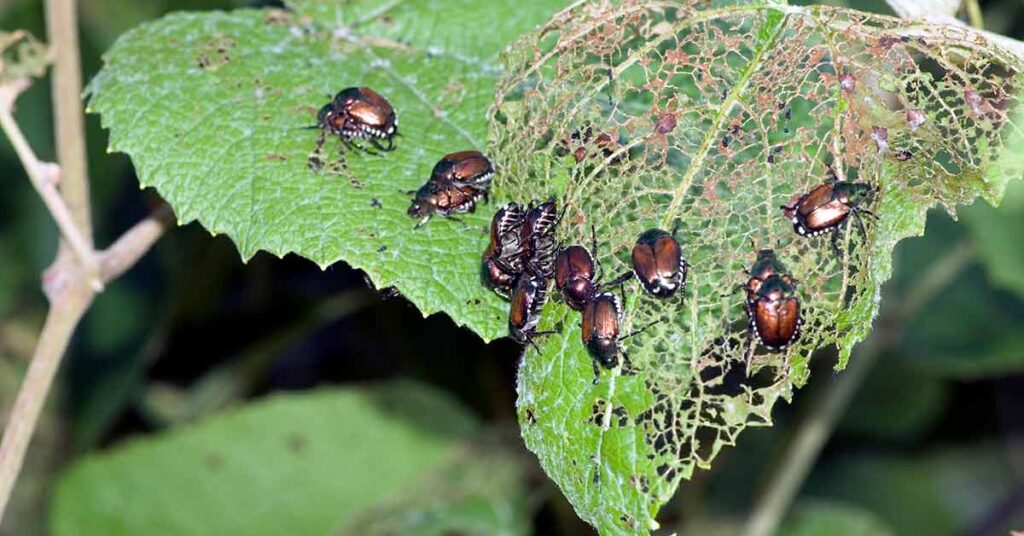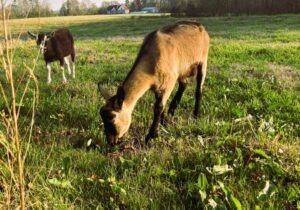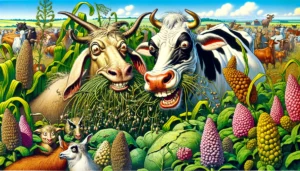
integrated pest management ipm.jpg
Integrated Pest Management (IPM)
Definition: Integrated Pest Management (IPM) is a holistic approach to pest management that combines multiple strategies and techniques to prevent, suppress, or manage pest populations effectively while minimizing risks to human health, beneficial organisms, and the environment. IPM integrates biological, cultural, mechanical, physical, and chemical control methods to achieve long-term pest control and sustainable agricultural production.
Description: Integrated Pest Management (IPM) is based on the principles of ecosystem management, ecological balance, and pest population dynamics, emphasizing proactive and preventive measures to reduce pest infestations, crop damage, and pesticide use. It involves monitoring pest populations, identifying pest species and life stages, assessing pest risks, and implementing targeted interventions tailored to specific crops, pests, and production systems.
Fall off the barn roof and busted your keister? Life on the farm or ranch can be tough on the bum. Need a break? Laugh it off at FarmerCowboy.com, the #1 farm humor site. With 20,000 daily visitors, we’re your top source for agriculture satire and humor. Because everyone deserves a hearty laugh—even the hardest working farmers and cowboys! Join us and turn those long days into fun tales at FarmerCowboy.com.
Key Components of IPM: Integrated Pest Management (IPM) incorporates several key components and practices, including:
- Pest Monitoring: Regularly monitoring pest populations, scouting fields, inspecting crops, and using traps, pheromones, or sensors to detect pest presence, abundance, distribution, and activity levels, enabling timely decision-making and intervention strategies.
- Pest Identification: Accurately identifying pest species, life stages, behavior, and damage symptoms using taxonomic keys, field guides, diagnostic tools, or entomological expertise, facilitating targeted pest management tactics and control measures.
- Economic Thresholds: Establishing economic injury thresholds (EITs) or action thresholds (ATs) based on pest population levels, crop growth stages, yield potential, and market value, determining when intervention measures are warranted to prevent economic losses or crop damage.
- Cultural Practices: Implementing cultural controls such as crop rotation, tillage, planting dates, crop spacing, cultivar selection, intercropping, mulching, irrigation management, and sanitation practices to disrupt pest cycles, enhance crop resilience, and reduce pest pressures naturally.
- Biological Controls: Introducing, conserving, or enhancing natural enemies, predators, parasites, pathogens, or microbial antagonists of pests through biological control agents, biopesticides, or habitat manipulation to regulate pest populations and provide long-term suppression.
- Mechanical Controls: Using physical barriers, traps, screens, barriers, nets, fences, or exclusion devices to physically deter, capture, or exclude pests from crops, structures, or storage facilities, preventing pest entry, movement, or damage without reliance on chemical pesticides.
- Physical Controls: Applying heat, cold, light, moisture, or electromagnetic radiation to disrupt pest development, behavior, or reproduction, such as heat treatments, cold storage, vacuum sealing, solarization, or light traps, targeting pests while minimizing environmental impacts.
- Chemical Controls: Using pesticides judiciously, selectively, and as a last resort in integrated pest management (IPM) programs, choosing low-risk, reduced-risk, or least-toxic pesticide formulations, application methods, or formulations to minimize adverse effects on non-target organisms, ecosystem services, and human health.
- Decision Support Systems: Utilizing decision support tools, models, software, apps, or expert systems to analyze pest data, forecast pest outbreaks, evaluate control options, and optimize IPM strategies based on scientific evidence, risk assessment, and cost-benefit analysis.
Benefits of IPM: Integrated Pest Management (IPM) offers numerous benefits to agriculture, including:
- Reduced Pesticide Use: Minimizing pesticide applications, residues, and environmental contamination by using targeted, selective, and synergistic pest management tactics and integrated pest control methods, reducing risks to human health, beneficial organisms, and non-target species.
- Enhanced Pest Control: Improving pest suppression, resistance management, and crop protection by integrating multiple pest management strategies, maximizing the efficacy, durability, and sustainability of pest control measures while minimizing reliance on chemical pesticides.
- Increased Crop Yields: Optimizing crop yields, quality, and profitability by preventing yield losses, crop damage, or post-harvest losses caused by pests, diseases, or weeds, ensuring consistent and sustainable agricultural production under changing environmental conditions.
- Preservation of Ecosystems: Protecting biodiversity, ecosystem services, and natural resources by conserving beneficial insects, pollinators, predators, and microbial communities, promoting ecological balance, biological diversity, and habitat conservation within agroecosystems.
- Cost Savings: Reducing production costs, input expenses, and pest management expenditures by adopting cost-effective, efficient, and resource-efficient pest control measures, improving farm profitability, competitiveness, and economic viability over the long term.
- Regulatory Compliance: Meeting regulatory requirements, certification standards, and market demands for sustainable agriculture, food safety, and environmental stewardship by implementing integrated pest management (IPM) practices, recordkeeping, and compliance measures.
Challenges and Considerations: Integrated Pest Management (IPM) also faces challenges and considerations, including:
- Knowledge and Skills: Acquiring, disseminating, and applying knowledge, skills, and training in integrated pest management (IPM) practices, biological control techniques, pest identification, monitoring methods, decision support tools, and sustainable agriculture principles among farmers, extension agents, and agricultural stakeholders.
- Technology and Innovation: Harnessing advances in digital agriculture, precision agriculture, remote sensing, data analytics, and decision support systems to enhance IPM implementation, pest forecasting, early warning systems, and adaptive management strategies for real-time pest management and risk mitigation.
- Adoption and Scaling: Encouraging widespread adoption, scaling-up, and institutionalization of integrated pest management (IPM) approaches, policies, incentives, and extension services across diverse agricultural landscapes, farming systems, and socio-economic contexts to promote sustainable intensification, resilience, and food security.
- Risk Management: Balancing pest control efficacy, economic viability, and environmental sustainability in integrated pest management (IPM) decision-making, risk assessment, and risk management strategies to address trade-offs, uncertainties, and conflicts between short-term gains and long-term benefits.
- Stakeholder Engagement: Promoting multi-stakeholder collaboration, participatory approaches, and knowledge co-creation processes involving farmers, researchers, policymakers, NGOs, industry partners, and civil society organizations to address complex pest management challenges, build social capital, and foster innovation networks.
Conclusion: Integrated Pest Management (IPM) is a comprehensive and sustainable approach to pest management that combines multiple tactics and strategies to minimize pest risks, protect crops, and preserve ecosystems. By integrating biological, cultural, mechanical, physical, and chemical controls in a holistic and adaptive framework, IPM offers a practical and effective solution to pest problems while promoting agricultural sustainability and resilience.
References:
- van Lenteren, J. C., et al. (2018). Integrated pest management in the global arena. CAB Reviews, 13(23), 1-16.
- Zalom, F. G., et al. (2016). IPM decision support systems: Definitions, classifications, and overview. Annual Review of Entomology, 61, 227-247.
- Pretty, J., et al. (2006). Resource-conserving agriculture increases yields in developing countries. Environmental Science & Technology, 40(4), 1114-1119.
Originally posted 2023-01-06 21:22:02.
Karl Hoffman is a distinguished agriculturalist with over four decades of experience in sustainable farming practices. He holds a Ph.D. in Agronomy from Cornell University and has made significant contributions as a professor at Iowa State University. Hoffman’s groundbreaking research on integrated pest management and soil health has revolutionized modern agriculture. As a respected farm journalist, his column “Field Notes with Karl Hoffman” and his blog “The Modern Farmer” provide insightful, practical advice to a global audience. Hoffman’s work with the USDA and the United Nations FAO has enhanced food security worldwide. His awards include the USDA’s Distinguished Service Award and the World Food Prize, reflecting his profound impact on agriculture and sustainability.





